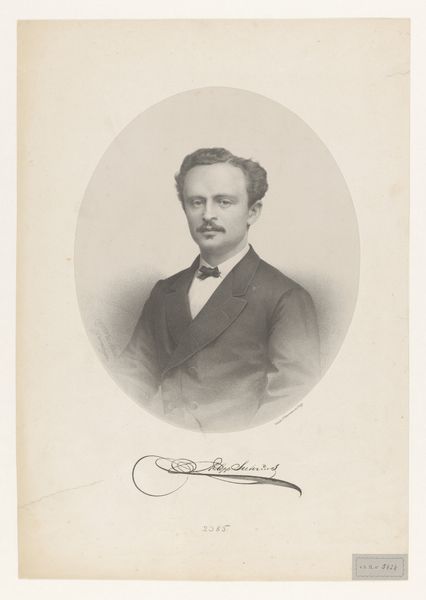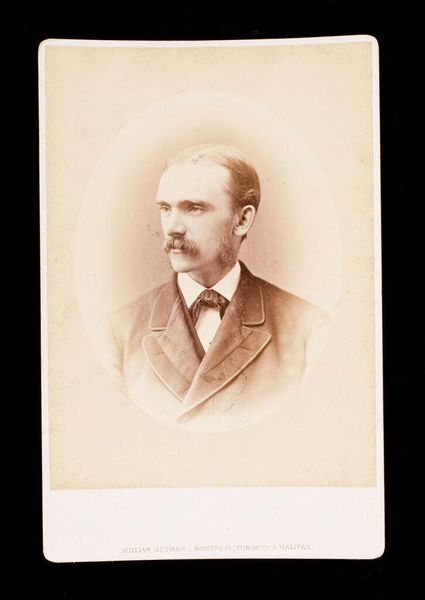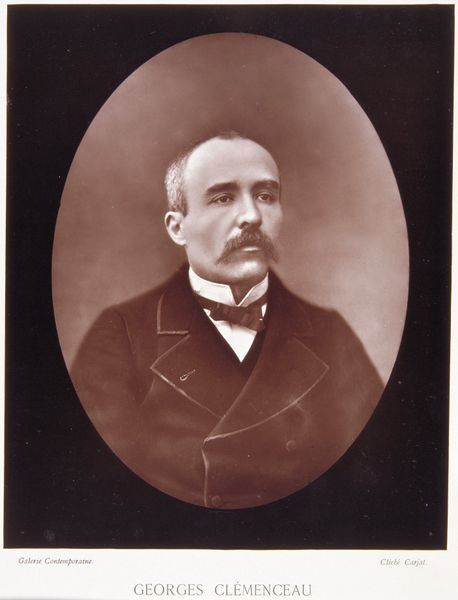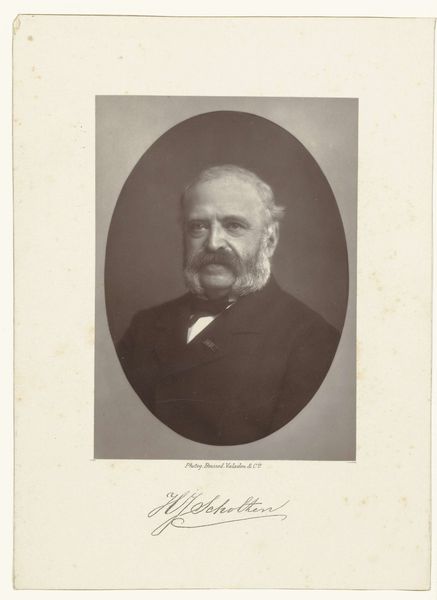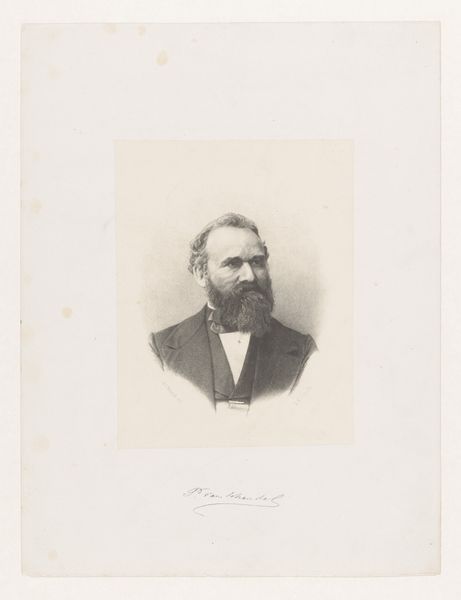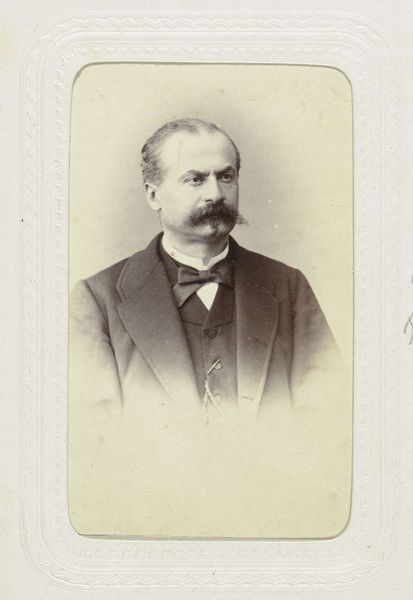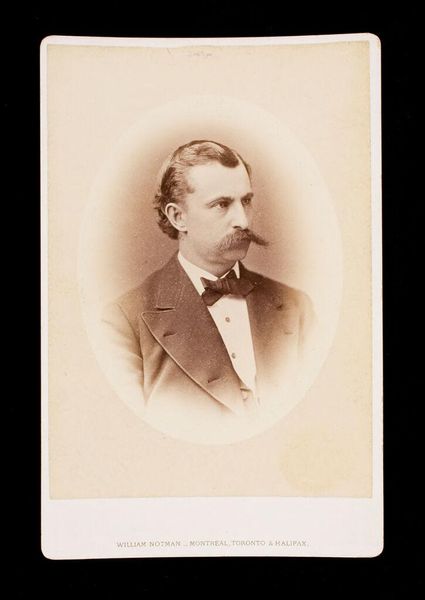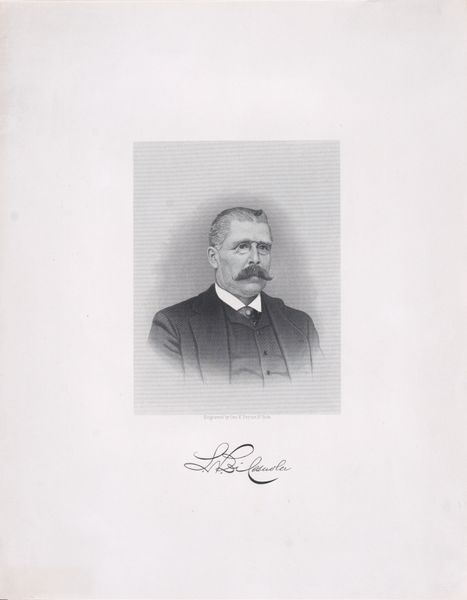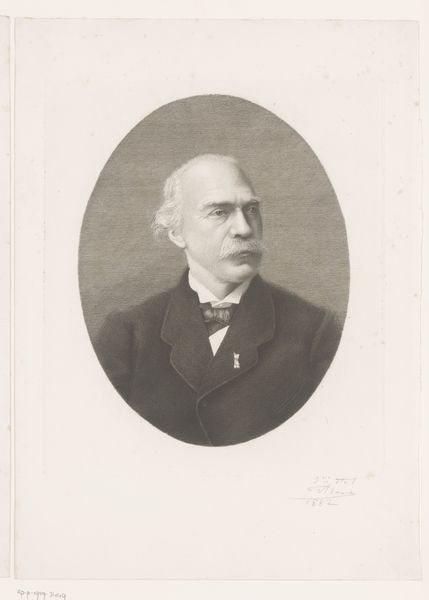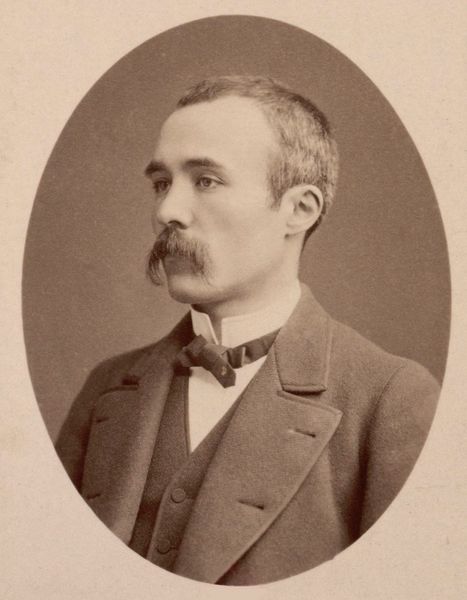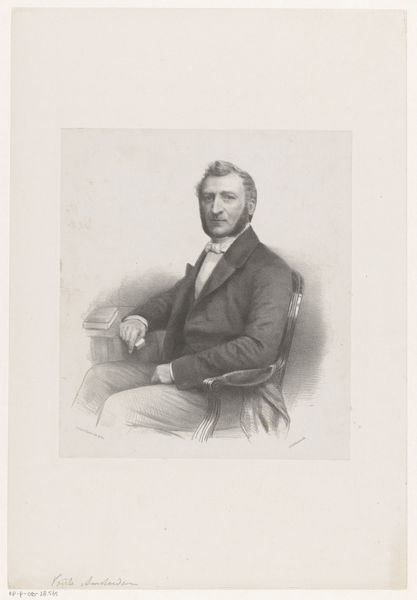
photography, gelatin-silver-print
#
photography
#
gelatin-silver-print
#
realism
Dimensions: height 146 mm, width 103 mm, height 195 mm, width 108 mm
Copyright: Rijks Museum: Open Domain
Editor: This is "Portret van de muziekpedagoog en -historicus S. van Milligen," a gelatin-silver print photograph by Deutmann & Zonen, dating from 1893 to 1896. There is something quite arresting about this simple oval portrait. It’s such a classical composition in many ways. How do you approach a piece like this, focusing on what’s visibly there? Curator: Precisely. Note the formal structure, initially. The portrait’s composition, contained within an oval, immediately establishes a classical visual order. The subject, positioned in profile, allows a linear reading from the crisp white of his cravat, up along the curve of his jawline, to the elaborate swirl of his hair. Editor: Yes, the values really stand out. I'm drawn to the contrast of light and dark – his white tie against the deep black of his jacket, for instance. Curator: That tension creates a dynamic visual interest, wouldn’t you agree? The textures are also significant. The smooth tones of his face and neck are juxtaposed against the implied velvety texture of the jacket and the delicate details of his hair and moustache. How do these material contrasts contribute to the overall meaning? Editor: They seem to offer depth to the portrait, physically and perhaps metaphorically, hinting at layers of personality and social standing. But how would this kind of study help to approach understanding non-figurative pieces, like, say, non-representational paintings? Curator: Good question! Applying formal analysis to non-figurative works focuses purely on the interaction of line, color, shape, and texture, creating visual rhythm, balance and tension in the composition. Just like with this portrait, we are concentrating on its visual architecture, not on external narrative or context. Editor: That makes sense. Thank you – that’s a fresh way of understanding visuality! Curator: Indeed, and it reminds us that close observation offers more rewards.
Comments
No comments
Be the first to comment and join the conversation on the ultimate creative platform.
